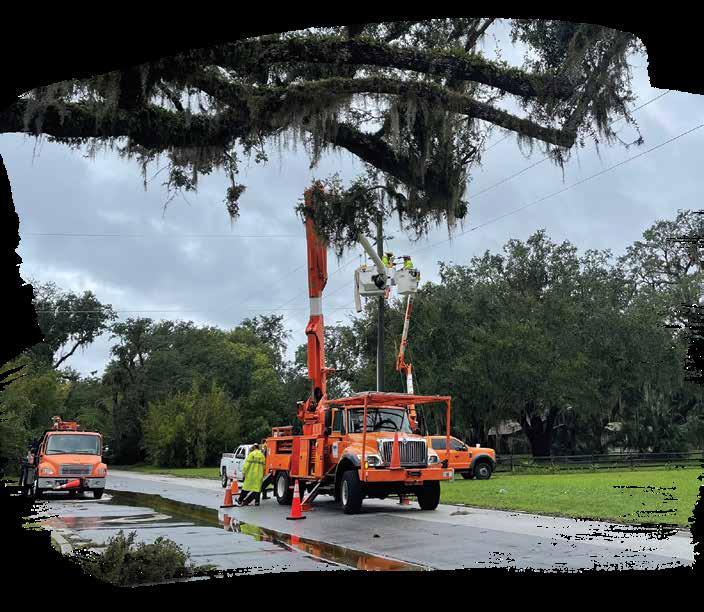HURRICANE HANDBOOK 20 23 OSCEOLA




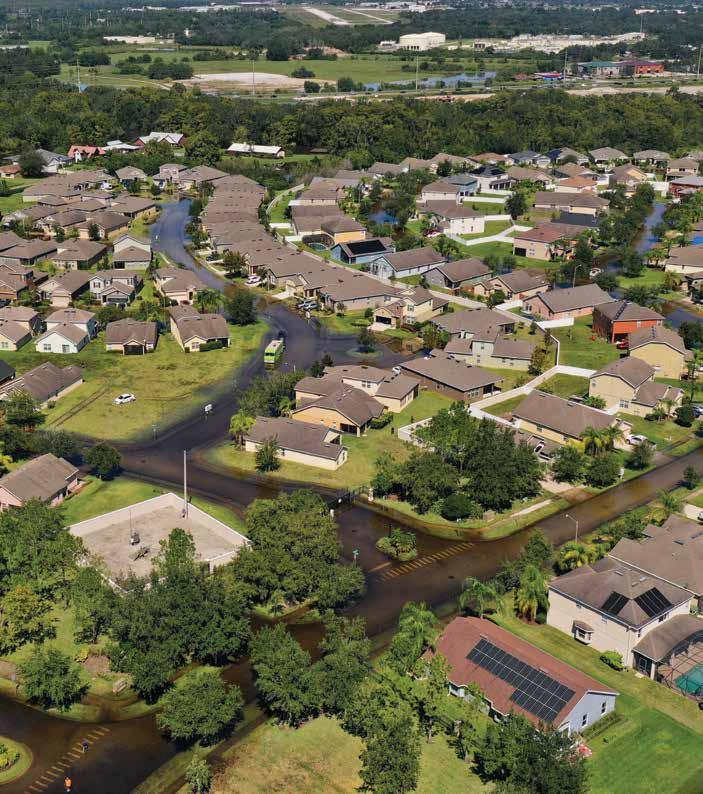










The timing of last year’s late-season hurricanes demonstrates the fact that a hurricane can come at any point during the season. Hurricanes Ian and Nicole came nearly six weeks apart at the tail end of the 2022 hurricane season.



We’ve prepared this annual hurricane guide so that you and your family can begin preparing for the 2023 Atlantic Hurricane Season by taking the steps necessary to ensure your safety.
In this guide, you’ll find helpful information on what to expect this season, tips on keeping your family safe during the storm and steps to take after the storm has passed.
Last year’s hurricane season brought 14 named storms, eight hurricanes and two major hurricanes, making it an above-normal hurricane season. Looking ahead to the upcoming hurricane season, weather forecasters are predicting a below-average hurricane season with 13 named storms, six hurricanes, and two major hurricanes. Experts reference the likely development of El Niño as a primary factor for a below-average season, but the safest plan of action is to always prepare for the worst-case scenario.
We urge you to begin reviewing the information in this guide to help develop a plan. Learn your evacuation routes or best practices for staying home during the storm. Make a plan, build a kit, stay informed and be prepared to take action.
As you prepare, rest assured that KUA is prepared too. We have a team of nearly 300 highly skilled employees ready to respond to severe weather at a moment’s notice.
Stay safe!
Sincerely,
Brian Horton President and General Manager
The quickest way to report a power outage to KUA is via text message. If an outage occurs, text the word “OUT” to our toll-free number 877582-7700 and you will be prompted through the system.When power is restored, a follow-up message will be sent.

Scan the QR code below to report a power outage via text.
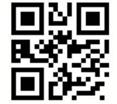
To view KUA’s outage map in real-time visit kua.com/map.
Alert Osceola is a free emergency notification system utilized by various public agencies in Osceola County to keep residents informed. To register for Alert Osceola, visit www.alertosceola.org or text the phrase “alertosceola” to 888777.


TEXT AND IMPORTANT ELEMENTS SHOULD BE KEPT WITHIN THIS AREA
EMERGENCY
FIRE, POLICE, MEDICAL: 911
OSCEOLA COUNTY CITIZEN INFORMATION CENTER HOTLINE
407-742-0000
LOCAL NEWS AND INFORMATION
Positively Osceola
www.positivelyosceola.com
@PositivelyOsceola
WFTV — Channel 9 (ABC)
www.WFTV.com
@wftv
WESH — Channel 2 (NBC)
www.WESH.com
@wesh2news
WKMG — Channel 6 (CBS)
www.Clickorlando.com
@News6
WOFL — Channel 35 (FOX)
www.Fox35.com
@FOX35Orlando
Central Florida News 13 (Spectrum)
www.Mynews13.com
@LikeNews13
Telemundo — Channel 31
www.Telemundo31.com
@Telemundo31
Univision — Channel 43
www.Noticiasya.com/orlando
@NoticiasUnivisionOrlando
Osceola News Gazette
www.aroundosceola.com
@osceolanewsgazette
El Osceola Star


www.elosceolastar.com
@osceolastarnews
Orlando Sentinel
www.orlandosentinel.com
@orlandosentinel
LOCAL GOVERNMENT
Osceola County Government
407-742-2275
www.osceola.org
@OsceolaCountyFl
Osceola County Office of Emergency Management
407-742-9000
emdo@osceola.org
www.readyosceola.org
@OsceolaEOC
City of Kissimmee
407-847-2821
www.kissimmee.gov
@CityofKissimmee
City of St. Cloud 407-957-7300
www.StCloudFL.gov
@CityofStCloudFL
Kissimmee Police Department
407-846-3333 (Non-emergency)
Kissimmee.gov
@KissimmeePolice
Osceola County Sheriff’s Office
407-348-2222 (Non-emergency)
407-348-1100 (Administration Building)
www.osceolasheriff.org
@osceolasheriff
St. Cloud Police Department
407-891-6700 (Non-emergency)
www.StCloudFL.gov
@StCloudPD
HCA Florida Osceola Hospital
700 W. Oak Street, Kissimmee, FL 34741
407-518-3801 (Emergency Room)
407-846-2266 (Non-emergency)
Kissimmee Utility Authority
407-933-9800 or 407-933-7777
TEXT AND IMPORTANT ELEMENTS SHOULD BE KEPT WITHIN THIS AREA
www.hcafloridahealthcare.com/locations/osceola-hospital
@HCAFloridaOsceolaHospital
AdventHealth Kissimmee
2450 North Orange Blossom Trail
Kissimmee, FL 34744
407-933-6632 (Emergency Room)
407-846-4343 (Non-emergency)
www.adventhealth.com
@AdventHealthKissimmee
Orlando Health St. Cloud Hospital
2906 17th Street, St. Cloud, FL 34769
407-498-3620 (Emergency Room)
407-892-2135 (Non-emergency)
www.stcloudregional.com
@OrlandoHealthStCloudHospital
AdventHealth Celebration
400 Celebration Place
Celebration, FL 34747
407-303-4772 (Emergency Room)
407-303-4000 (Non-emergency)
www.adventhealth.com
@AdventHealthCelebration
HCA Florida Poinciana Hospital
325 Cypress Parkway, Kissimmee, FL 34758
407-530-2100 (Emergency Room)
407-530-2000 (Non-emergency)
www.hcafloridahealthcare.com/locations/poinciana-hospital
@HCAFloridaPoincianaHospital
Orlando Health Emergency Room and Medical Pavilion — Osceola
1001 E. Osceola Parkway
321-842-1270
www.orlandohealth.com
Report Outage: Text “out” to 877-582-7700
www.kua.com
@mykua
Duke Energy
407-629-1010 or 800-700-8744
Report Outage: 800-228-8485
www.duke-energy.com
OUC (St. Cloud)
407-957-7373
Report Outage: 407-957-7373
www.ouc.com
@oucthereliableone
Peace River Electric Cooperative
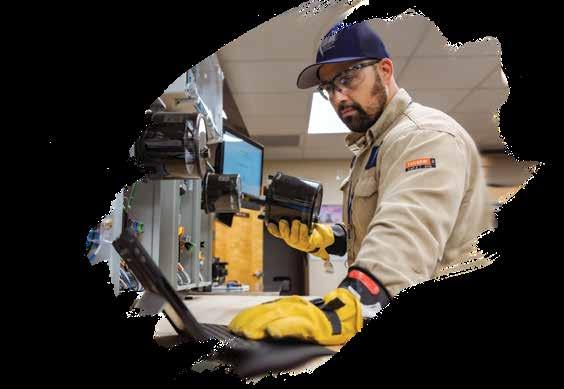
863-773-4116 or 800-282-3824
Report Outage: 800-282-3824
www.preco.coop
WATER COMPANY
Toho Water Authority
407-944-5000

www.tohowater.com
@tohowater
St. Cloud Customers
407-957-7344
https://stcloudfl.gov/1674/Utilities

TRASH COLLECTION INSIDE THE CITY OF KISSIMMEE
City of Kissimmee Sanitation Division
Debris Pickup: 407-518-2507
www.kissimmee.gov
CenturyLink
866-642-0444
TEXT AND IMPORTANT ELEMENTS SHOULD BE KEPT WITHIN THIS AREA
www.centurylink.com
TELEVISION CABLE
TRASH COLLECTION OUTSIDE THE CITIES OF KISSIMMEE & ST. CLOUD
Osceola County Solid Waste Division & Recycling
Trash & Yard Waste
407-742-7750
www.osceola.org
TRASH COLLECTION INSIDE THE CITY OF ST. CLOUD
City of St. Cloud Solid Waste Division
407-957-7289
www.StCloudFL.gov
COMMUNITY ASSISTANCE
2-1-1 Community Resources & Elder Helpline
407-839-4357 or 800-963-5337
www.hfuw.org or uw211help@gmail.com
American Red Cross
5 N. Bumby Ave., Orlando, FL 32803
407-894-4141 or 407-644-9300
www.redcross.org
www.midfloridaredcross.org
Senior Services Osceola Council on Aging
700 Generation Point, Kissimmee, FL 34744
407-846-8532
Elder Helpline: 800-963-5337
www.osceolagenerations.org
Meals on Wheels
407-847-2144
www.osceolagenerations.org
GAS COMPANIES
(Natural)
TECO Peoples Gas
407-425-4662 or 877-832-6747
www.peoplesgas.com
(Propane)
Suburban Propane
407-847-3582 or 800-776-7263
www.suburbanpropane.com
Spectrum
855-707-7328
www.spectrum.com
Comcast Cable/Xfinity
800-934-6489 or 800-266-2278
www.xfinity.com
PERMITS
City of Kissimmee: 407-518-2120
www.kissimmee.org
City of St. Cloud: 407-957-7224
www.stcloudfl.gov
Osceola County: 407-742-0200
permits.osceola.org
OTHER
Florida Poison Information Center
800-222-1222
www.poisoncentertampa.org
Osceola County Animal Services
407-742-8000
www.osceolacountypets.com
Osceola County Annual Special Needs Shelter Application
407-742-9001
www.osceola.org
UF IFAS Extension in Osceola County Educational information about: Tree Inspection/Licensed Arborists Disaster Preparation and Recovery
321-697-3000
osceola.ifas.ufl.edu
Osceola County Mosquito Control
407-742-0505
www.osceola.org
Osceola District Schools
407-870-4007 (Community Relations Office/School Closings)
407-870-4600 (District Office)
407-870-4897 (Student Services)
www.osceolaschools.net
TRANSPORTATION
(Rail/Train)
Amtrak Information & Reservations
800-872-7245
www.amtrak.com
SunRail
855-724-5411
www.sunrail.com

(Bus)
Greyhound
800-231-2222
www.greyhound.com
Lynx Bus Service
407-841-5969
www.golynx.com
Brightline
831-539-2901
www.gobrightline.com/orlando
FEDERAL/STATE ASSISTANCE
FEMA: 800-621-3362
(Presidential Declared Disasters)
www.fema.gov
State Volunteer & Donations Hotline
850-414-7400
www.volunteerflorida.org
TEXT AND IMPORTANT ELEMENTS SHOULD BE KEPT WITHIN THIS AREA
Fla. Building Contractor License Verification Dept. of Business and Professional Regulation
850-487-1395
www.myfloridalicense.com
Florida Department of Agriculture and Consumer Services
800-435-7352 or 800-352-9832 (Espanol)
www.freshfromflorida.com
State Assistance Information Line
800-342-3557
www.floridadisaster.org
Price Gouging Hotline
866-966-7226 or 850-414-3990
www.myfloridalegal.com
State Department of Financial Services Consumer Hotline
877-693-5236
www.myfloridacfo.com
WEATHER LINKS
National Hurricane Center
www.nhc.noaa.gov
@NWSNHC
National Oceanic & Atmospheric Administration
www.noaa.gov
@NOAA
The Weather Channel
www.weather.com
@theweatherchannel
Florida Division of Emergency Management
www.floridadisaster.org
@FLSERT
Red Cross
www.redcross.org
www.redcross.org/local/florida/central-florida
@RedCross
Download FEMA’s Are You Ready?
Citizen Preparedness Guide
www.ready.gov/make-a-plan
NOAA Weather Radio Information
www.weather.gov/nwr
EMERGENCY ALERT SYSTEM (EAS): A digital system designed to give emergency information and instructions from federal, state and local authorities. The system is interfaced with the cable television system as well as radio and television stations. When activated, it broadcasts the latest information on weather reports, road conditions, evacuations, shelter locations and re-entry information.
EMERGENCY SHELTER: A shelter provided during and immediately following a disaster.
EVACUATION ORDER: The most important instruction you will receive from local government officials.
EVACUATION ROUTE SIGNS: Signs are located on all major evacuation routes.
SHELTER PERIOD: The interval of time from the point of evacuation until the primary situation or event has decreased to a level that will permit people to leave designated emergency shelters. The time may vary from several hours to several days, depending upon the severity of the hurricane.
SMALL CRAFT ADVISORY: When a tropical cyclone threatens a coastal area, small craft operators are advised to remain in port and not venture to sea.
EYE: The low-pressure center of a hurricane. It is surrounded by the most intense area of the storm, and in contrast to the eye wall, winds are normally calm and sometimes the sky clears.
EYE WALL: The ring of thunderstorms that surrounds a storm’s eye. The heaviest rain, strongest winds and worst turbulence are normally in this area.
FLASH FLOOD WATCH: The National Weather Service issues this type of watch when local flooding can be expected within 12 to 24 hours. Stay alert.
FLOOD WARNING: The National Weather Service issues a flood warning when flood waters are expected to exceed flood stage at any point on rivers and bayous. Most flood warnings will be issued 24 to 60 hours in advance of the crest.
GALE WARNINGS: Issued when winds of 39 to 54 mph (34 – 47 knots) are expected.
HURRICANE: Pronounced rotary circulation with a constant wind speed of at least 74 mph (64 knots).

HURRICANE SEASON: The portion of the year having a relatively high incidence of hurricanes. In the Atlantic, Caribbean and Gulf of Mexico, generally regarded as June 1 through Nov. 30.
HURRICANE WARNING: Hurricane conditions are expected somewhere within the specified coastal area, usually within 36 hours.
HURRICANE WATCH: Hurricane conditions are possible somewhere within the specified coast area, usually within 48 hours.
KNOTS: A measure of wind speed over a nautical mile. A nautical mile is one minute of one degree of longitude and is slightly longer than the ordinary statute mile as used in the United States.
LANDFALL: The term used that indicates the moment the eye of a hurricane hits land.
MILLIBAR: A metric measure of air pressure.
STORM SURGE: A great dome of water, often 50 miles wide, that comes sweeping across the coastline near the area where the eye of a hurricane makes landfall.
STORM WARNINGS: Issued when winds of 55 to 73 mph (48 – 63 knots) are expected. If a hurricane is expected to strike a coastal area, gale or storm warnings will not usually precede hurricane warnings.
TORNADO WARNING: Indicates a tornado has been spotted. Be prepared to take shelter.
TORNADO WATCH: Conditions are favorable for this type of storm.
TROPICAL CYCLONE: A general term for all cyclonic circulations originating over tropical water.
TROPICAL DEPRESSION: Rotary circulation at the surface with a maximum constant wind speed of 38 mph.
TROPICAL DISTURBANCE: A moving area of thunderstorms in the tropics that maintains its identity for 24 hours or more. This type of disturbance is common.
TROPICAL STORM: Distinct rotary circulation with constant wind speed ranges of 39 to 73 mph.
TROPICAL STORM WARNING: Tropical storm conditions are expected within the specified coastal area within 36 hours.
TROPICAL STORM WATCH: Tropical storm conditions are possible within the specified coastal area within 48 hours.
TROPICAL WAVE: A kink or bend in the normally straight flow of the surface air in the tropics which forms a low pressure trough or pressure boundary, with showers and thunderstorms. These may eventually develop into a tropical cyclone.

FEDERAL EMERGENCY MANAGEMENT
AGENCY (FEMA): The agency that assists state and local governments, as well as citizens, in recovering from a disaster. FEMA is part of the federal Department of Homeland Security.

NATIONAL OCEANIC ATMOSPHERIC ADMINISTRATION (NOAA): Provides a continuous broadcast of weather conditions in Central Florida. The broadcast frequency is 162.475 for Orange or Osceola or 162.550 for Polk, Tampa and Melbourne.

OSCEOLA COUNTY OFFICE OF EMERGENCY MANAGEMENT: The county department responsible for providing the coordination of the preparedness, response, recovery and mitigation of natural and man-made disasters that may affect the residents and visitors of Osceola County.
Public Information Hotline: 407-742-0000 or www.readyosceola.org.
OSCEOLA COUNTY SPECIAL NEEDS
PROGRAM: Residents with disabilities, medical problems or mobility problems who may need transportation assistance or disaster shelter during an emergency may register with the Osceola County Special Needs Program. To register call the Osceola County Special Needs Program at 407-742-9001 or go online at www. readyosceola.org.








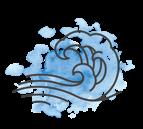



























The Saffir-Simpson Hurricane Wind Scale is a rating of 1 to 5 based on a hurricane’s sustained wind speed, with 5 being the highest. Hurricanes reaching Category 3 and higher are considered major hurricanes because of their potential for significant loss of life and damage. Category 1 and 2 storms are still dangerous, however, and require preventative measures.
CATEGORY 1
WINDS 74 – 95 MPH
Very dangerous winds will produce some damage. Well-constructed frame homes could have damage to roof, shingles, vinyl siding and gutters. Large branches of trees will snap and shallowly rooted trees may be toppled. Extensive damage to power lines and poles likely will result in power outages that could last a few hours to several days.
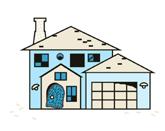

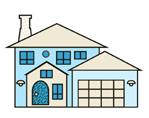
CATEGORY 2
WINDS 96 – 110 MPH
Extremely dangerous winds will cause extensive damage. Well-constructed frame homes could sustain major roof and siding damage. Failure of aluminum, screened-in, swimming pool enclosures will be common. Many shallowly rooted trees will be snapped or uprooted and block numerous roads. Near-total power loss is expected with outages that could last from several days to weeks.

CATEGORY 3
WINDS 111 – 129 MPH
Devastating damage will occur. Well-built framed homes may incur major damage or removal of roof decking and gable ends. Most commercial signage, fences and canopies will be destroyed. Many trees will be snapped or uprooted, blocking numerous roads. Electricity and water may be unavailable for several days to a few weeks after the storm passes.
CATEGORY 4
WINDS 130 – 156 MPH
Catastrophic damage will occur. Well-built framed homes can sustain severe damage with loss of most of the roof structure and/or some exterior walls. Most trees will be snapped or uprooted and power poles will be downed. Fallen trees and power poles will isolate residential areas. Power outages may last for weeks to possibly months. Most of the area could be uninhabitable for weeks or months.
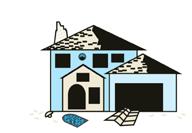
CATEGORY 5
WINDS 157 MPH OR HIGHER
Catastrophic damage will occur. A high percentage of framed homes will be destroyed, with total roof failure and wall collapse. Extensive damage to roof covers, windows and doors will occur. Fallen trees and power poles will isolate residential areas. Power outages may last for weeks to possibly months. Most of the area could be uninhabitable for weeks or months.
TEXT AND IMPORTANT ELEMENTS SHOULD BE KEPT WITHIN THIS AREA
Work as a “family team” to utilize this handbook and construct your own Family Disaster Plan. Once the plan has been assembled, build the “Survival Kit” (described on page 37) and rehearse your family preparedness plan. Make sure everyone in your family understands the plan completely and knows exactly what to do. Once you have completed the preparations, keep the document in a safe place where it will be easy to find during hurricane season.
In any kind of emergency — especially one involving an approaching hurricane — advance planning and preparation are the keys to weathering the storm safely.
The first step toward building your Family Disaster Plan is to consider what preparations can be done before hurricane season to alleviate stress once the season begins. Use this checklist to get your pre-hurricaneseason preparations underway.
Inventory information should include values for each insured item as well as date of purchase and serial number. Having the appropriate insurance will help you minimize your losses. Ask your insurance agent to review your current policy.
There are four types of property insurance on the market today:
HOMEOWNERS INSURANCE: This type of insurance usually covers losses caused by winds, storms and broken water pipes. However, flooding is not covered. It may be a good time to review what your policy covers.
WIND AND HAIL INSURANCE: This type of insurance covers losses due to storm winds in coastal areas. It is an underwritten policy provided by insurance providers when it is not included in the basic homeowners policy.

FLOOD INSURANCE: This type of policy is underwritten by the National Flood Insurance Program. The policy is available in those communities that adopt and enforce flood plain management regulations.
RENTERS INSURANCE: Both property protection insurance and flood insurance for contents are available for those who live in rental units. Contact your insurance agent for details.
Important note: there may be a waiting period before your policy is activated. Contact your insurance agent for details.
Gather copies of your family’s important paperwork, and store them in a secure location that will be well within reach if you have to locate them quickly because of an approaching storm. Consider including copies of the following for each family member:
• Social Security Cards/Visas
• Passports
• Driver’s license
• Vehicle registration and proof of insurance
• Local map
• Wills, deeds and powers of attorney
• Insurance policies (life, health and property)
• Medical and vaccination records, including medicine or food allergies and other specific health conditions
• Copies of prescription medicine labels
• Birth and marriage certificates
• Tax or other important business and personal records
• Emergency contact list and phone numbers
• Veterinary and vaccination records for pets


You’ve already taken the first step toward additional disaster planning by acquiring a copy of the Osceola Hurricane Handbook — now it’s time to put the handbook to good use by completing your Family Disaster Plan (see page 15). Use this checklist to assist you with:

FINANCIAL PLANNING: You should be prepared to sustain yourself and your family away from your home for several days, keeping in mind it could be several weeks. Government agencies may not be able to react with assistance as quickly as you think they can. The following breakdown will give you an idea of expenses for a family of four with one of the four having “special needs” requirements.
PROPERTY INVENTORY: Create a thorough inventory of your property and possessions using photographs, video and/or manual records.
INDOOR SAFETY PLAN: Anything that can move, fall, break or cause a fire is a hazard during a hurricane. An indoor home inspection and teaching responsible family members how to cut off utility connections at the source will minimize potential problems and hazards.
OUTDOOR SAFETY PLAN: An inventory of small outdoor items such as toys, potted plants and lawn furniture should be made. Give family members responsibility for knowing their locations as well as how and where to secure them.

CARING FOR TREES: To increase storm resistance of trees, they need to be checked yearly and pruned if necessary by an insured, licensed and qualified International Society of Arboriculture Certified Arborist. Call UF IFAS Extension in Osceola County at 321-697-3000 or visit www.treesaregood.org for a list of arborists.
DISASTER SUPPLIES KIT: Water, food, first aid kit, clothing, bedding, tools and special needs items. $100 or more. (In addition to items you may already have; see page 37.)
HOME AND PROPERTY PREPARATION: The estimated cost of securing a 1,400 sq. ft. home with 11 to 13 openings requiring 5/8" plywood, visqueen, screws, duct tape, etc., $250 to $350.
• Prepare your property by keeping ditches, ponds, inlets and swales free of debris and report clogs.
• Prevent flooding at your home by using storm-proofing measures and elevate utilities on the property.
EVACUATION EXPENSES: These expenses include fuel expense, restaurant expense and your stay in hotels. The average hotel night is $120. Add to that the fuel and eating expense, and you may need to budget $220 per day.
PET BOARDING: Average boarding costs, depending on the animal, are $20 to $35 per night.
PRESCRIPTION MEDICINES: You should budget enough money to pay for a one-month supply.
CASH ON HAND: During a disaster, credit and bank card use may be limited due to loss of power. The amount of cash you have on hand should be determined by what you believe your needs will be.
Keep a large supply of fresh batteries on hand to operate radios and other emergency equiptment for several days.
• Store emergency supplies in airtight plastic bags. Keep a supply on hand to use throughout your hurricane preparations.
• Have enough waterproof containers, such as plastic bins or buckets, to store last-minute items such as clothing, evacuation supplies, groceries and more.

• Re-evaluate your “Survival Kit” at least once a year to confirm it still meets your family’s needs.
• Replace batteries according to expiration dates recommended by manufacturer. Check at least every six months, and keep a large enough supply of fresh batteries on hand to operate radios and other emergency equipment for several days.

• Re-evaluate all clothing items, rain gear, sleeping bags and similar supplies every six months.
• Ask your pharmacist how long prescriptions may be stored and make arrangements.

Here are a few tips to help you complete those last-minute details once a tropical storm or hurricane watch has been issued:
• Check food, water, first aid, batteries, pet and other stored supplies to make sure they are fresh, adequate and ready to use.

• Start a “last-minute” shopping list for any items you may need and pick them up as soon as possible.
• Fill your car with gas; check oil, tires and other maintenance points.
• If you plan to evacuate, place items you’ll need in your car.
• Complete any laundry or other household chores to ensure your family will be more comfortable if you have to spend time at home without electricity.
• Pick up loose items around your property and store them until after the storm passes.
• Check the tools and supplies you’ll need to secure windows, doors and other storm-vulnerable areas.
• Make sure your generator, if you plan to use one, is ready with gas, oil and a safe location for operation.
• Update your family’s emergency phone list if necessary.
• Contact your doctor, veterinarian, dentist or pharmacist to arrange for any extra prescriptions or other medications you need to have on hand.
• Once a hurricane “Warning” has been issued for Osceola County, check with your local government on their sandbag distribution policy and locations.
By the time a tropical storm or hurricane warning is issued for our area, options for dealing with the storm will be limited to two fundamental choices — remaining in a secured, prepared home or evacuating. Use these guidelines for last-minute preparations involving either of those choices.
The most susceptible areas of your home are the exterior windows, glass doors, garage doors and roof and gable ends. If hurricane winds enter any of these openings, increased internal pressure and uplifting on walls and roof supports can cause major damage. Address any danger areas early in the season, so you can be ready to take action quickly when a storm approaches.
• Secure your home and property to protect it from hurricane-related damage. This includes boarding up windows, securing all doors, including the garage door, turning off power at the source, etc.
• Make sure all family members and pets are safely indoors, and that they stay there until the danger has passed.
• Make sure your vehicle is parked in the safest possible location to minimize storm-related damage.
• Continue monitoring local news and weather updates.
• Keep in touch with friends and family during the storm to let them know how you’re faring.


The most secure coverings for windows are shutters. If there are no shutters on your home, temporary coverings can be made of 5/8" plywood that must be installed with a 4" overlap on all sides. The plywood should be bolted to the house. This procedure will ensure it will stay in place and not become detached during a hurricane.
Reinforcement of plywood over large windows and glass doors can be accomplished by bolting a two-by-four support beam across the plywood and angling another two-by-four beam from that beam to an anchor that has been firmly set in the ground.
By the time a storm watch or warning is issued for your area, the majority of your family’s emergency preparations should be completed.
Garage doors can be reinforced by adding horizontal bracing to each panel at its weakest point. Kits are available at your local home improvement center.


Hurricane force winds can cause damage by lifting off the roof when entering unsecured openings of roof gable ends. Use the same temporary shutter procedures for exterior windows to cover the openings in this area.
Hurricane straps can increase the strength of your roof against the uplifting forces of hurricane winds by 50 to 75 percent. They are galvanized metal bracing materials designed to hold the roof joist to the top plate and reinforce the bonding strength beyond that of regular nails. Retrofitting your home with these straps is not considered a “do-it-yourself” project. A professional should be contracted.
Check around the yard for loose objects, such as toys, gardening tools, barbecue equipment, lawn chairs and other items that could cause damage if blown around. Have a “cleanup drill” to practice gathering these items quickly and putting them in a safe location.
• Secure your home and property to protect it from hurricane-related damage. This includes boarding up windows, turning off power at the source, etc.

• Continue monitoring local news and weather updates.
• Let your family, friends and neighbors know where you will be, how you can be reached and when you plan to return home.
• Leave the area as soon as possible to help minimize traffic delays along evacuation routes. Plan to leave early and allow extra driving time.
• Once you arrive at your destination outside the risk area, call to let your loved ones know you have arrived safely. Plan to stay until local officials give the “all-clear” for returning home.
After a disaster, you may need cash for the first few days, or even weeks. Income may stop if you can’t work. To help stay solvent, consider keeping a small amount of cash or traveler’s checks at home in a place where you can get at it quickly in case of a sudden evacuation. A disaster can shut down local ATMs and banks.


TEXT AND IMPORTANT ELEMENTS SHOULD BE KEPT WITHIN THIS AREA

TO PREPARE YOUR FAMILY FOR A DISASTER SITUATION, FOLLOW THESE FIVE STEPS.
STEP ONE: GATHER INFORMATION
Contact your local emergency management or civil defense office and your local American Red Cross Chapter for the following information:
• What disasters are most likely in your community?
• How would you be warned?
• How should you prepare for each?
STEP TWO: SHARE INFORMATION WITH YOUR FAMILY
Meet with all in your household to share information in these areas:
• Discuss the types of disasters that could occur.
• Explain how to prepare and respond.
• Discuss what to do if advised to evacuate.

• Practice what you have discussed.
STEP THREE: PLAN HOW YOUR FAMILY WILL STAY IN CONTACT IF SEPARATED BY A DISASTER
In a disaster, normal communications may not be possible. To contact your loved ones, you should choose a meeting place:
• A safe distance from your home in case of a fire.
• Outside your neighborhood in case you can’t return home.
• Use an out-of-state friend as a check-in contact for everyone to call. Sometimes it is easier to make longdistance calls than to make local calls in a disaster situation.
STEP FOUR: PREPARE YOUR FAMILY AND HOME
• Post emergency telephone numbers by every phone.
• Show responsible family members how and when to shut off water, gas and electricity at main switches.
• Install a smoke detector on each level of your home, especially near bedrooms; test monthly and change the batteries twice each year.



• Contact your local fire department to learn about home fire hazards.
• Learn first aid and CPR. Contact your local American Red Cross chapter for information and training.
STEP FIVE: MEET WITH YOUR NEIGHBORS
Plan how the neighborhood could work together after a disaster.
• Know your neighbors’ skills.
• Determine how you could help neighbors who have special needs, such as elderly or disabled persons.
• Make plans for childcare in case parents cannot get home.
TEXT AND IMPORTANT ELEMENTS SHOULD BE KEPT WITHIN THIS AREA
A disaster strikes. Your home and possessions are destroyed. Will you be able to pick up the pieces? You will, if you:
• Keep an up-to-date household inventory.
• Keep this guide and other valuable documents in a secure location.

An up-to-date household inventory is a valuable resource. Before a disaster, the inventory will help you determine if you have enough insurance to cover the contents of your home. After the disaster, the inventory will help prove the value of the possessions that are damaged or destroyed for insurance or tax deduction purposes. An inventory consists of:
• Description of each item (include model and serial numbers)
• When you bought it
• How much it costs
It is highly recommended to have photos or a video to accompany your inventory.

Do not forget less expensive items, such as towels and clothes. It will be costly to replace them entirely. Be




thorough. Do not forget lawn furniture or tools in the garage. Keep the inventory up to date.
The key to a smooth recovery is documentation. Secure your valuable papers in a waterproof, fireproof container.
Table 1 is a list of the valuable papers that need to be in a safe-deposit box, especially during a disaster such as a hurricane. Table 2 is a list of valuable papers that need to be in your possession at home at all times in a waterproof, fireproof locked box. Additional copies of valuable records should be in the care of a lawyer, the administrator of wills, business associates or trusted family members residing outside of your home.
PROPERTY
• Property records (deeds, titles, leases)
• Household inventory
• Home improvement records
• Automobile title and bill of sale
• Copies of insurance policies
FINANCIAL
• Income tax returns
• Copyrights and patents
• Contracts (including promissory notes)
• Copies of insurance policies
• Certificates for stocks, bonds, etc.
• Important receipts and bills of sale
• Supporting documents for years of large transactions, unusual losses or deductions
IDENTIFICATION
• Social Security cards
• Citizenship papers
TEXT AND IMPORTANT ELEMENTS SHOULD BE KEPT WITHIN THIS AREA
• Passports
• Birth certificates
• Death certificates
OTHERS
• Divorce decrees
• Adoption/Custody Papers
• Military service records
• Retirement documents
• Religious records
• Copies of your and your partner’s wills
• Trust agreements, wills, powers of attorney, and notarized health care powers of attorney
GENERAL
• Safe deposit box key

• Safe deposit records and inventory of items
• List of emergency contacts (doctors, vets, financial advisors, clergy, reputable repair contractors and family members)
PROPERTY
• Rental property records
• Guarantees and warranties
• Appliance manuals
• Copies of insurance
FINANCIAL
• Income tax returns
• Current bank balances
• Loan payment books
• Employee benefits
• Bank account, loan, credit card, investment account numbers
IDENTIFICATION
• Social Security numbers
• Drivers license numbers
• Copies of citizenship papers
• Copies of birth certificates
• Copies of marriage certificates
• Educational records
HEALTH
• Health records
• Copies of immunization records
• Copies of prescriptions for medicines and eyeglasses
• Copies of veterinary/ vaccination records
• Health/dental or prescription insurance cards
TABLE 2:VALUABLE PAPERS TO KEEP AT HOME IN A WATERPROOF, FIREPROOF
Residents with disabilities, medical problems or mobility problems who may need transportation assistance or disaster shelter during an emergency may register with the Osceola County Special Needs Program at www.readyosceola.org. Keep these considerations in mind when making plans for your loved ones who have special needs.





Notify your health agency where you will be during a hurricane and when care can be re-established. Contact your physician if you are home-bound and under the care of a physician, but not a home health agency. If you require respirators or other electric-dependent medical equipment, you should make prior medical arrangements with your

If you require oxygen, check with your supplier about emergency plans. If you evacuate, remember to take medications, written instructions regarding your care, your walker, wheel chair, cane or special equipment, along with your bedding.
If you do not evacuate, keep a list of the names and phone numbers of friends or family, so you can make quick arrangements to stay with them in the event of a power interruption. Also, locate the nearest hospital that can help provide emergency power for your life support equipment.
Remember that although KUA does give priority to life support customers during isolated electric outages, during a time of a widespread outage from a natural disaster, such as a hurricane, it is often impossible to give priority because of the extent of damage and the order in which power must be restored.
• A list of items that will accompany him/her if your special needs family member is evacuated, including an adequate supply of medications and special foods.
• Maps with evacuation routes highlighted.

the event of a power interruption.
Some disabled and elderly citizens may have special needs that hinder them from being able to leave their homes during emergencies. Government and emergency personnel recognize the needs of this segment of the population. However, due to their increasing numbers, it is almost impossible to provide aid for everyone. You can be a part of a care program to offer assistance to those family members who cannot help themselves by:
• Educating and physically helping them prepare their homes and property for emergencies such as hurricanes.
• Helping them shop for their necessary supplies.
• Helping them create and post their “Family Disaster Plan Checklist” (see page 35) in a visible location as a reminder to them and others.
Special needs family members in nursing homes also need assistance in preparing for disasters. You can ensure the safety of your family members by inquiring if their health care providers are adequately prepared for disaster or emergency situations. These agencies should have the following:
• A disaster plan that is reviewed annually by administration and staff.
• Policies that provide for in-house emergency preparedness training for employees.
• Identification procedures for patients, such as bands or cards that indicate names, ages, medical conditions and current medications.
• Transportation services for evacuations that are renewed annually.
• Agreements with other health care providers that are renewed annually.
• Transfer forms readily available authorizing admissions into hospital facilities if necessary.

• A list of friends and family members who have agreed to help in emergency situations.
• The best and safest arrangements for special needs family members may be to bring them with you when you evacuate.
If you do not evacuate, keep a list of the names and phone numbers of friends or family, so you can make quick arrangements to stay with them in
TEXT AND IMPORTANT ELEMENTS SHOULD BE KEPT WITHIN THIS


• Gather up pedigree and health records (including vaccination records) and lists of special dietary or other needs for your family’s pets. Keep this information together so you have quick access to it.


•Include contact information for your family veterinarian in the “Important Numbers and Notes” page of this handbook.
• Keep at least a one-month supply of any food and medications your pets may need, including flea and tick treatments, special shampoos, dietary supplements, etc. Label them clearly with your pet’s name and instructions for safe use of each product.
• Keep blankets, toys, and cleaning supplies including paper towels, spray bottles and trash bags in air tight bags within a plastic tote container.
• Be sure to have enough pet carriers, leashes, muzzles and any other restraining equipment you might need, and label them with your pet’s name, your name and your contact information.
• Decide ahead of time whether you will leave your pets at home, board them, or take them with you if you decide to evacuate.
• It won’t help to board pets anywhere within the area threatened by a hurricane — they won’t be any safer than they would be at home. Choose boarding facilities well out of the threatened area, and make arrangements in advance to get your pets to that location.
• Budget for boarding costs of $20 or more per animal per night, depending on the animal’s size and special needs.
• If you plan to keep pets with you in a hotel, motel or campground, confirm ahead of time that the facility will accept your pets.
• Study your travel map ahead of time to determine where you will be able to stop to feed, water and exercise your pet.
• The safest thing to do is evacuate before a hurricane ever arrives — but if for some reason you can’t evacuate (or choose not to evacuate), make plans to keep your pets indoors until the emergency is over.
• Don’t let pets go outdoors until you’re certain it’s safe. Be sure power lines, dangerous tree limbs, wildlife and other hazards have been addressed before any family member or pet goes outdoors alone.
Ideally, it is best for pet owners not to rely on pet-friendly shelters; they should make plans in advance to take pets with them to a location out of the threatened area. However, if no other option exists, pet-friendly shelters will serve as locations where pets and their owner can stay in the same building. Owners should bring the following supplies:
• A crate to house your pet with enough room to stand up, lie down, and stretch out
• Label crates with pet owner’s name and phone number
• Medications stored in a waterproof bag
• Food that is in a waterproof bag, water and bowls
• Blankets and toys
• Cleaning supplies including paper towels, spray bottles and trash bags
• A leash and harness collar with identification tags
• Veterinary records for each pet in an air-tight bag
Osceola County has three approved pet-friendly shelter locations:
Harmony High School 3601 Arthur J. Gallagher Blvd. Harmony, FL 34771
Liberty High School 250 Pleasant Hill Blvd. Kissimmee, FL 34746
Kissimmee Middle School 2410 Dyer Blvd.
Kissimmee, FL 34741
Specific shelter location openings are announced prior to an event.
One of the most effective ways to protect your home from potential damage caused by powerful storms is to use sandbags. Sandbags can be a simple yet highly effective method of preventing water damage during a hurricane, and they are an essential tool for anyone living in an area at risk of flooding.
Sandbags are essentially just bags filled with sand, which can be placed in strategic locations around a property to prevent floodwaters from entering. They are typically made of heavy-duty materials, such as burlap or polypropylene, which can withstand the weight of the sand and the force of the water. When placed correctly, sandbags can act as a barrier, diverting water away from the property and preventing it from seeping in.



Prior to a tropical storm or hurricane, Osceola County will open sandbag distribution at one or more locations. Supplies including bags and sand are provided, and residents are typically allowed 25 sandbags per household and should bring their own shovel or filling tool.
Osceola County recommends that residents store uncontaminated sandbags for reuse during possible future storms. Sandbags that have not come into contact with water can be saved to be used in case of additional flooding. Uncontaminated sand can be used for gardens or flower beds and bags can be thrown in the garbage.
Never use the sand from sandbags to fill children’s sandboxes or playgrounds. Residents must dispose of sandbags that have come in contact with floodwater by taking them to the Bass Road Yard Waste Disposal Site at 750 S. Bass Road, Kissimmee, FL 34746.


preparations in the event of an approaching storm. By putting employees in a position to prepare early at home, you will be better positioned to have their help in preparing your business to weather the storm.

• Decide ahead of time if or when your business will close early because of a storm. Communicate this to your employees so they can plan their own preparations accordingly.
• Photograph all of your office equipment and keep a current inventory of all office machines and supplies.
• Store copies of valuable paperwork, files and data in a safe location, preferably outside the risk area. Or, prepare portable backup files that can be driven out of the risk area.
• Follow instructions in this handbook for securing your property to make sure your offices will be protected.
Businesses are just as likely to suffer hurricane-related damage as are private homes. Businesses, however, also carry the risk of lost productivity due to hurricane damage or to the absence of key employees who may not be able to make it to the office for several days after a storm has passed. Here are practical steps you can take to prepare your business for a storm.
Your business can benefit from using the information presented throughout the Osceola Hurricane Handbook — simply convert the guidelines from home use to business use. Then, make your emergency preparation plan, share it with your employees and practice the plan before it must be used in a real weather emergency.
• Create an Evacuation Plan and post it on each level of your building. Be sure to conduct evacuation drills annually with employees.
• Determine with your employees how much time they might need away from the office to make last-minute
• Consider adding insurance coverage to help you recover from productivity lost as the result of a hurricane.
• Make sure key employees are cross-trained and able to handle one another’s duties in case a staff member has to be out for an extended period of time because of an evacuation or storm damage.
• Think about whether you might try to relocate your operation or ask your employees to work from home if storm damage prevents you from returning to your normal location for an extended period of time.
• Keep a record of companies that provide disaster recovery services such as cleanup.

43% of businesses that experience a disaster and have no emergency plan never re-open.

When it comes to hurricanes, we’re usually fortunate to have notice of the storm’s approach several days in advance. The smartest plan for those who live in the storm’s path is to make arrangements to evacuate the area early and safely, and to travel far enough to be sure you will be out of the at-risk area.
Use this list as a guide for making your evacuation process as smooth and efficient as possible.
• REMEMBER: When you evacuate, your family will be one of many with the same need to get out of town quickly. Expect driving times to be approximately four times longer than normal because of heavy traffic.
• Stay calm and set a good example for your family members, friends and neighbors.
• Fuel and check your car. Make sure you have an extra set of keys.
• Check your disaster supplies, and make sure you have at least a three-day supply to take with you.
• Make sure you have flashlights and extra batteries.
• Make sure you bring cash. Your credit cards may not work.

• Include items for family members with special needs (elderly, infants, disabled, etc.).
• Bring your important documents (household inventory list, insurance documents, mortgage papers, etc.).
• Turn off electricity at home at the main box. Simply turning off lights and appliances is not enough.
• Gas heating and cooling systems must be turned off.
• Let trustworthy family and friends know when you leave and where you are going.
• Use recommended evacuation routes.
• Make arrangements for your pets. Remember, only a few emergency shelters accept pets.
• Stay tuned to the local EAS radio broadcast stations for status of the storm and evacuation shelter information.
As an element of your family preparedness plan, choose an out-of-area contact for all family members to call in case of an emergency. Your contact should live far enough away that he or she will not be affected by the disaster.
6.5 MILLION

Floridians were ordered to evacuate ahead of Hurricane Irma in 2017, mostly for those living on barrier islands or in coastal areas; in mobile or sub-standard homes; and in low-lying or flood-prone areas.
• Lock your home.
Knowing your evacuation routes should be part of your family’s evacuation plan. For those of us in Osceola County that usually means moving further inland or to the west. However, as we saw in 2004 with the approach of Hurricane Charley in the Gulf, there are times when the population may be evacuating to the east.

PRECAUTIONARY:
This phase concentrates on people who are most vulnerable to the effects of hurricane winds and water. The emphasis is on safely evacuating offshore workers, persons on coastal islands, persons living in low-lying areas, the “special needs” population (the elderly, infirm and others) and persons aboard boats.

RECOMMENDED:
This phase concentrates on all people who are at risk — that is those who live in a low-lying or flood-prone area, and those who live in a manufactured home (mobile home, RV, etc.).

MANDATORY:
In this stage, maximum emphasis will be employed by authorities to encourage evacuation of everyone except essential emergency personnel out of the risk area. Entry back into the risk area will be curtailed and monitored by public safety and emergency personnel. When the hurricane is close to the risk area, even the designated evacuation routes will be closed — so it’s important to get out early, before your “escape routes” are no longer passable.

• Face coverings

Planning for hurricane season and other potential disasters can be stressful.
• If you live in a site-built home, shelter in place at your home. If you have to leave, make plans to stay with family or friends to ride out the storm.
• Shelter space will be prioritized for the following:
- Those living in low-lying or flood-prone areas
- Those living in manufactured homes
- Those with special needs
• All shelters will include enhanced registration and medical screening to include temperature checks.
If you evacuate to a public shelter, prepare a kit with personal items you cannot do without during an emergency.
If your family has “special needs” relatives, it is important to decide what you will do in the event of an emergency or evacuation. Evacuation centers will not be able to offer the same quality of care that is provided for your elderly or disabled family members, only basic care and assistance will be available. Medications, skilled nursing care, oxygen and other special medical equipment will not be available. Remember, evacuation centers are staffed with volunteers, and supplies are limited to the basics such as food, water and first-aid kits.
• Blankets, pillows, sleeping gear
• Non-perishable foods that do not require cooking
• Important papers, including this Osceola
Hurricane Handbook
• Water
• Extra clothing for each family member
• Baby supplies, such as diapers, baby formula/ food, baby wipes, quiet toys

• Flashlight with extra batteries
• Medications
• Disinfectants
• Portable ice chest
• Personal hygiene items

• Quiet family activities — books, cards, puzzles, children’s coloring books and crayons, etc.
• Weapons or firearms
• Alcoholic beverages or illegal drugs
• Pets
• Valuables and “family treasures” of irreplaceable value
• Candles, kerosene lamps or other flammables
• Stay away from any windows or glass-paned doors that haven’t been boarded up from the outside. Cover them with blankets from the inside to prevent injury or damage from water, flying debris or broken glass.

• Stay tuned to local news and weather broadcasts via battery-operated radios or televisions to keep abreast of the storm’s progress and other emergency bulletins.

• Never rely on candles, kerosene lamps or other flammable lighting materials. Use glow sticks, flashlights or battery-powered lamps instead.
If a hurricane strikes our area, the best place to ride out the storm is far away, well outside the storm’s path. In some cases that may mean traveling several hours’ distance to get out of the storm’s path. If you are not able to travel that far, and your home is not a safe location, take your family to an emergency shelter located as far as possible from the danger area.
Every family should make every possible effort to prevent being trapped at home during a hurricane. Even after all necessary arrangements have been made to evacuate in plenty of time, it might be a good idea to discuss these “during the storm” safety tips, just in case someone becomes stranded and must weather the storm at home:
• Never go outdoors during a hurricane — not even during the “quiet time” that occurs while the storm’s eye is moving through the area. In addition to wind, flying debris and possibly hail or lightning, you may also encounter dangers such as rising water and downed power lines.
• Keep your family together at all times, preferably in an interior room of your home, or whatever indoor location you feel will provide the best protection from hurricaneforce winds.

• Gather up extra pillows, blankets, sleeping bags, sofa cushions and mattresses to make a “soft shelter” your family can utilize in case your home is damaged by hurricane winds or tornadoes.
• Keep pets with you at all times so you can monitor their

As a hurricane approaches, local emergency preparedness officials will recommend who should prepare to evacuate, when to evacuate and which evacuation routes they should follow.
moves away from our area. That feeling of relief, however, shouldn’t diminish your sense of caution, because many dangers remain after a hurricane has passed. In fact, most hurricane-related deaths occur after a hurricane, often when people are removing debris.

Downed power lines; broken water, sewer or gas lines; clogged roadways and dangling tree limbs are just a few of the lingering hazards that must be dealt with after a hurricane has moved through the area.
Here are several tips to keep you and your family safe during the cleanup and recovery period following any major storm.
• Avoid driving until authorities clear roadways of debris and downed power lines.
• Don’t drive through standing water. You could be stranded, injured or swept away by flash-flood waters.


• Watch out for downed power lines. Stay away from them, and report them to authorities.
• Be on the lookout for other broken utility lines — water, sewer and gas lines in particular, but also phone, cable and other service hook-ups. Report these kinds of problems to authorities as well.
• Never try to touch or move downed lines or repair broken electric or gas connections.
• Be careful not to accidentally set fires, and quickly report any fires you do notice. Fires spread rapidly during emergency situations when decreased water pressure and transportation problems may hinder firefighters.



• Be extremely careful clearing storm debris, which may camouflage downed power lines and serve as hiding places for wild animals, or be contaminated with raw sewage or other hazards.
• Always wear heavy gloves and boots, and wear chainsaw chaps if operating a chainsaw.
• If remodeling or rebuilding your home is necessary, be sure to check with your local building office for proper permits.
It may be several days before authorities can restore water and sewer service to your home after a hurricane. While you’re waiting, it is important to keep stored water safely potable and free of contamination. Store a threeday supply for each family member. A normally active person needs to drink at least two quarts of water daily. If you have the slightest doubt about the water’s safety for drinking, purify it by using one of the following methods:
• Boil for 10 minutes and pour between containers to replenish oxygen.
• Add eight drops of liquid chlorine bleach (contains 5.25% sodium hypochlorite/no soap or fragrances) per gallon.
• Purification tablets and iodine are not effective and are no longer recommended by the USDA.
• Water can be safely stored in a cool dark place for up to six months.


• You can safely store water in your freezer by filling plastic bags or other leak-proof containers about 2/3 full, then freezing. When the electricity goes out during a storm, simply let the stored ice melt.



• Even a water bed, bathtub or spare bucket can be used to store extra water — just make sure to fill them up before you lose electric or water service at home. For water beds, fill with fresh water and treat with two ounces of bleach per 120 gallons. Use water stored in bathtubs or open containers for cleaning and washing, but not for cooking or drinking.
• While you are waiting for the lights — and the refrigerator — to come back on, you may not be able to travel safely to the grocery store. Plan ahead to have enough nonperishable food on hand for several days of use.
• Check all canned or stored dry goods for quality before consuming them. Toxins can form quickly in the form of bacteria or mold in the hot, humid days after a hurricane.

• If you aren’t sure whether the food is safe, do not eat it! You might not have quick access to emergency medical care to treat food poisoning because of blocked roadways or other storm-related delays.
• Keep a supply of non-perishable food in the trunk of your car or some other safe location, just in case your primary food stores become damaged during the storm and cannot be used.

If you choose to buy a generator, make sure you get one that is listed with the Underwriter’s Laboratory (UL) or Factory Mutual (FM).
Look at the labels on lighting, appliances and equipment you plan to connect to the generator to determine the amount of power that will be needed to operate the equipment.
For lighting, the wattage of the light bulb indicates the power needed. Appliances and equipment usually have labels indicating power requirements on them.

Choose a generator that produces more power than will be drawn by the combination of lighting, appliances and equipment you plan to connect, including the initial surge when it is turned on.
If your generator does not produce adequate power for all your needs, plan to stagger the operating times for your equipment. If you cannot determine the amount of power that will be needed to operate your appliances, lighting and equipment, ask an electrician to determine that for you.
If your equipment draws more power than the generator can produce, you may blow a fuse on the generator or
Follow the directions supplied with the generator. Under no circumstances should portable generators be used indoors, including inside a garage. Adequate ventilation is necessary, and proper refueling practices, as described in the owner’s manual, must be followed.
It is a good idea to install one or more carbon monoxide (CO) alarms inside your home. If CO gas from the generator enters your home and poses a health risk, the alarm will sound to warn you.

Many home fires and deaths from carbon monoxide poisoning have occurred from using a generator improperly.

Be sure to let the generator cool down before refueling. Store fuel for the generator in an approved safety can. Use the type of fuel recommended in the instructions or on the generator label. Local laws may restrict the amount of fuel you may store, or the storage location. Ask your fire department for additional information about local regulations. Store fuel for the generator outside in a locked shed or other protected area. Do not store fuel in a garage, basement or anywhere inside a home, as vapors can be released that may cause illness and are a potential fire or explosion hazard.

TEXT AND IMPORTANT ELEMENTS SHOULD BE KEPT WITHIN THIS AREA




KUA employees work tirelessly to restore power as quickly as possible after a storm or hurricane — including bringing in crews from other areas to assist, if necessary. To view a real-time map of outages affecting KUA customers, visit http://kua.com/map.
Phase 1: Assess & Protect
We send highly trained workers into the field to locate and monitor safety hazards. These hazards can include downed wires and poles. Our crews then make sure electricity is off for your safety. They also ensure that power is flowing to critical facilities like hospitals, fire stations and other essential services.
Phase 2: Repair Damage
Once damage has been assessed and safety measures enacted, we dispatch crews to make repairs. Substations and main electric lines and wires must be repaired to restore power to you. Even if you do not see our field crew teams, rest assured we are working nearby to get your power restored.
Phase 3: Restore Power
Once damage is repaired, we begin restoring power to homes and buildings. If you notice that a neighbor’s power is back before yours, don’t worry. Your home may be on a different circuit or line. We appreciate your patience as we work as safely and quickly as possible to get your lights back on.
Please review the illustrations on page 33 for information on power restoration and who is responsible for fixing what.
After we repair our power plants and the lines that carry electricity from them, we restore customers who provide essential services to the community, including hospitals, care facilities and police/fire stations. Then, we repair damage that will return power to the greatest number of customers in the least amount of time. Finally, we restore small neighborhoods and individual customers.
If you, your friends or neighbors remain without power following severe flooding from a hurricane, please know that KUA and Osceola County will work together to get your service restored. Please follow these steps to ensure power is connected to your property quickly and safely.
Step 1 – Contact KUA to determine the reason you are without power. If you cannot receive power because of flood concerns, proceed to Step 2.
Step 2 – Contact a licensed electrician of your choice. They will need to pull a permit through Osceola County to inspect your property’s utility connection, and ensure power can be restored safely to your structure. This permit is generally free of charge following a storm.
Step 3 – With a completed permit and approval from a licensed electrician, Osceola County officials will mark your meter safe to receive power, and will then alert KUA that power can be restored.
Step 4 – KUA will restore power.
When a power outage happens, KUA first ensures public safety, then we work our way down the line making repairs. At each step, we prioritize the jobs that help the most people. We greatly appreciate your patience while we move through these steps to restore power to everyone.
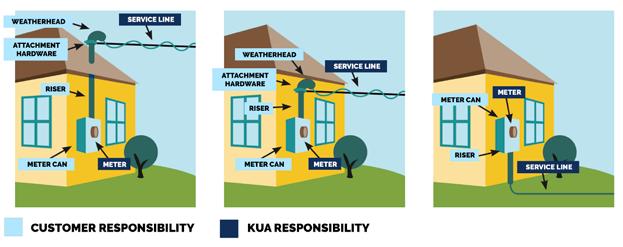
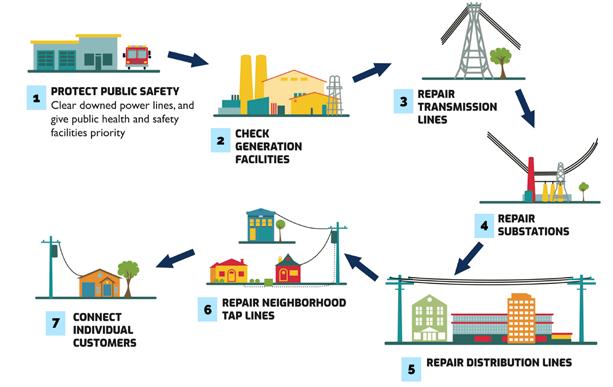
If your electrical components are damaged, you may be responsible for repairs. Identify your type of service connection below to learn what your responsibilities are.
TEXT AND IMPORTANT ELEMENTS SHOULD BE KEPT WITHIN THIS AREA

If there is damage to your home, contact your insurance company as soon as possible for an adjuster to come to your home and appraise the damage. Remember, in a disaster situation, someone may not come immediately. Try to be patient.
Listed here are steps you can follow while you are waiting. These steps will help to expedite the adjuster’s evaluation of the damage and thus speed up the process.
• Review your insurance coverage to make sure it is adequate. Hurricane damage is covered under a standard homeowners policy, but it is very important to insure your home and belongings to their full replacement cost. Flooding is generally not covered under standard homeowners policies, so ask your agent about flood insurance.
• Know the difference between replacement cost versus actual cost. If a hurricane destroys a television bought in 1995 for $700 with a current market value of $300, actual cost would pay only $300 for the television.
• Take an inventory of your possessions. Pictures or video recordings may also be helpful for insurance purposes. Store the inventory and pictures/videos off the premises to help facilitate the claim filing process if your belongings are damaged.
• Know your insurance company and insurance agent and how to get in touch with them quickly.
• If you rent a house or apartment, talk to your agent about purchasing a renters insurance policy if you don’t already have one.
• Before beginning any cleanup, take photos and keep notes. It is important to document everything that is damaged before starting to replace or to restore.
• Make temporary repairs. Keep all receipts for work done on your property.
• Notify your insurance agent as soon as possible. If you have vacated the premises, make sure your representative knows where to contact you. If you’re at home, but your phone isn’t working, leave a number where you can be reached.
• File your claim in the time limits required by your insurance company.
• Make sure your adjuster provides you with a proof of loss statement. Report any additional damage found as soon as possible so that damage may be added to your claim.
• If your home is uninhabitable and you must live in temporary lodging, save all receipts.
• Don’t be rushed into signing repair contracts. Deal with reputable contractors. If you are unsure about a contractor’s credentials, contact your claims adjuster, Better Business Bureau or Chamber of Commerce for referrals. Make sure the contractor you hire is experienced in repair work.
• Make copies of any and all correspondence and information sent to you by your insurance company.
Insurance Information Institute: www.iii.org
FLORIDA DEPARTMENT OF FINANCIAL SERVICES
Office of Insurance Regulation
200 E. Gaines Street, Tallahassee, FL 32399-0300 877-693-5236
www.myfloridacfo.com
Jimmy Patronis, Chief Financial Officer Take

This is where you apply what you have read in this handbook in order to create your own personal disaster plan. Entering the vital information on this page now will make it easier to follow when it is needed.
I PLAN NOT TO EVACUATE AND WILL GO TO A FRIEND/FAMILY MEMBER’S HOME. I HAVE NOTIFIED THEM AND MADE THE APPROPRIATE ARRANGEMENTS.
Name: _______________________________________________________________________

Address: ______________________________________________________________________
Phone number: _________________________________________________________________
I PLAN TO EVACUATE AND WILL GO TO A FRIEND/FAMILY MEMBER’S HOME OUT OF THE AT-RISK AREA. I HAVE NOTIFIED THEM AND MADE THE APPROPRIATE ARRANGEMENTS.
Name: ________________________________________________________________________
Address: ______________________________________________________________________


Phone number: __________________________________________________________________
I PLAN TO GO TO A PUBLIC SHELTER (IF AVAILABLE).
City: _________________________________________________________________________
I PLAN TO STAY IN A HOTEL/MOTEL.
Name of hotel/motel: ____________________________________________________________
Phone number: _________________________________________________________________
Location and city: _______________________________________________________________

ALTERNATE HOTEL/MOTEL LOCATION.
Name of hotel/motel: ____________________________________________________________
Phone number: __________________________________________________________________
Location and city: ________________________________________________________________
I HAVE CALCULATED THE DRIVING TIME TO MY DESTINATION AT APPROXIMATELY FOUR TIMES THE NORMAL DRIVING TIME, AND IT IS:
I HAVE STUDIED THE EVACUATION ROUTE THAT BEST SUITS MY NEEDS.
My evacuation route will be:
TEXT AND IMPORTANT ELEMENTS SHOULD BE KEPT WITHIN THIS AREA
I HAVE MADE PLANS FOR MY SPECIAL NEEDS FAMILY MEMBERS.
My plans are:
I HAVE MADE PLANS FOR MY PETS.
My plans are:
I HAVE COMPLETED MY PROPERTY INVENTORY AND PLACED IT IN A SAFE, WATERPROOF PLACE.
Location:
I HAVE MADE AN ASSESSMENT OF MY INSURANCE NEEDS. I HAVE THE FOLLOWING:
_____ Homeowners Insurance
_____ Wind and Hail Insurance
INSURANCE INFORMATION:
_____ Flood Insurance
_____ Renters Insurance
Name of Company/Agent: __________________________________________________________
Phone Number: ___________________________________________________________________
Address: _________________________________________________________________________
I HAVE COMPLETED THE NECESSARY PRECAUTIONS FOR THE FOLLOWING:
_____ Exterior windows _____ Roof protection
_____ Large windows and glass doors
Indoor hazard protection plan
_____ Garage doors _____ Outdoor property protection plan _____ Roof gable ends
Trees
I HAVE IDENTIFIED ANY ANTICIPATED EXTRA EXPENSE DUE TO A DISASTER, AND HAVE CALCULATED AN APPROXIMATE AMOUNT OF MONEY THAT WILL BE REQUIRED TO SEE MYSELF AND MY FAMILY THROUGH A DISASTER.
That amount is: $ _____________________________________________________________
Your “Survival Kit” should contain the following seven basic categories: WATER, FOOD, FIRST AID SUPPLIES, CLOTHING AND BEDDING, TOOLS, EMERGENCY SUPPLIES AND SPECIAL NEEDS ITEMS. Listed below are some items that could be included. Decide what items best fit your family’s needs. Gather quantities for 5 – 7 days.
FOOD
_____ fruits: canned, dried, roll-ups
_____ meats: canned or dried
_____ vegetables: canned
_____ milk: dried

_____ juices: canned or bottled
_____ drinking water
_____ peanut butter
_____ crackers
_____ soups: canned
_____ high energy bars
BABY SUPPLIES
_____ diapers, baby wipes
_____ milk, food, formula
_____ clothes
_____ disposable bottles and liners
_____ blankets, sheets, bed liners
_____ medications
_____ portable crib
_____ toys
CHILDREN’S SUPPLIES
_____ quiet toys
_____ coloring book
_____ crayons
_____ puzzles
_____ books
_____ CD player
_____ iPod/MP3 player and charger
_____ extra batteries
ADULT SUPPLIES
_____ shaving kit
_____ mirror
_____ eye glasses and contact lenses
_____ cash
_____ post cards, stamps, cards
_____ books, stationery
PERSONAL ITEMS
_____ soap, toothbrush, deodorant
_____ towel and washcloth
_____ sewing kit
_____ shampoo
_____ feminine hygiene items
CLOTHING & BEDDING
_____ rain gear
_____ sleeping bags and pillows
_____ extra shoes and work boots
_____ extra clothes
COMMUNICATION EQUIPMENT
_____ battery operated radio
_____ extra batteries
_____ NOAA weather radio

_____ cellular phone and charger
LIGHTING
_____ waterproof flashlights
_____ fluorescent distress flag
_____ extra batteries
COOKING EQUIPMENT
_____ gas grill
_____ extra propane gas
_____ barbecue grill
_____ lighter fluid/charcoal
_____ sterno stove
_____ outdoor cooking utensils
_____ manual can opener
_____ bottle opener
_____ disposable eating utensils
_____ disposable plates and cups
_____ paper towels
FIRST AID SUPPLIES
_____ first aid handbook
_____ scissors, tweezers
_____ thermometer
_____ first aid tape
_____ gauze rolls
_____ large non-stick pads
_____ Band-Aids™
_____ arm sling
_____ snake-bite kit
_____ cotton swabs
_____ ice/heat packs
_____ latex gloves
_____ safety pins
PAPERS & VALUABLES
_____ birth certificates
_____ Social Security cards
_____ marriage records
_____ death records
_____ computer back-ups
CLEANUP SUPPLIES
_____ washing detergents
_____ mops, brooms, etc.
_____ buckets, extra hose
TEXT AND IMPORTANT ELEMENTS SHOULD BE KEPT WITHIN THIS AREA
_____ old blankets, towels, rags
_____ large plastic bags
_____ small valuables
_____ legal IDs
_____ extra cash
_____ deeds
_____ mortgages
_____ stocks and bonds
_____ checking account information
_____ savings account records
_____ household inventory (photos, video or DVD)

_____ driver license
INTERNAL MEDICATIONS
_____ aspirin/acetaminophen
_____ sore throat lozenges and spray
_____ prescription medication
_____ laxative
_____ eye drops
_____ antacids
_____ rubber gloves
_____ bleach, disinfectants
_____ camera (used to photograph home before cleanup)
SAFETY SUPPLIES
_____ fire extinguisher
_____ waterproof matches
_____ work gloves
_____ work knife
_____ shovel, hand saw, ax
_____ hammer, nails, tarp, duct tape
_____ small boat
_____ chain saw
_____ chain saw chaps
_____ work boots
_____ leather gloves
_____ safety glasses
_____ generator
10
_____ nose spray
_____ vitamins
_____ cough medicine
_____ ear drops
EXTERNAL MEDICATIONS
_____ antibiotic ointment
_____ antibacterial soap
_____ baking soda
_____ hydrogen peroxide
_____ calamine lotion



_____ Betadine®
_____ lip balm
_____ antifungal cream
_____ sun block
SANITARY ITEMS
_____ emergency toilet
_____ plastic garbage bags
_____ paper towels, toilet paper
_____ liquid detergent
_____ disinfectant
_____ wet/dry vacuum
_____ extra oil, gas



In the event of a power outage, you may not have access to your cell phone’s call log or the internet. Write down additional phone numbers you might need if you are away from home. Bring this list with you if an evacuation is ordered.






